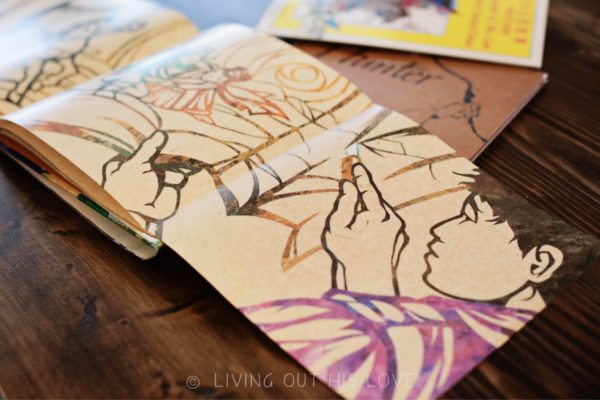With the Lunar New Year holiday in full swing, it’s a terrific time to add a few titles to our China library!

Especially given that we were just studying a little bit of Chinese history during the Middle Ages, these new titles are perfectly timed. We read through all but the last of these books in the same sitting, but they could definitely be shared over several days.
 The Paper Dragon, by Marguerite Davol, is a sweet fictional story about a a humble Chinese painter who is tasked with saving a village from a fierce, destructive dragon. Using his wit and incredible painting skills, the artist outsmarts the dragon and proves that the strongest thing in the world isn’t a “thing” at all. This is a lovely story with bright illustrations in a traditional Chinese style. My children particularly loved that all of the pages open up to reveal larger illustrations.
The Paper Dragon, by Marguerite Davol, is a sweet fictional story about a a humble Chinese painter who is tasked with saving a village from a fierce, destructive dragon. Using his wit and incredible painting skills, the artist outsmarts the dragon and proves that the strongest thing in the world isn’t a “thing” at all. This is a lovely story with bright illustrations in a traditional Chinese style. My children particularly loved that all of the pages open up to reveal larger illustrations.
 The Legend of Mu Lan, by Wei Jiang is a more traditional take on the famous Disney movie. With Chinese characters in addition to the English story, it’s a wonderful addition to your China library. Readers can’t help but fall in love with the brave Hua Mu Lan, whose name means “Magnolia Flower,” as she volunteers to take her father’s place in the war. This story is thought to be thousands of years old, first told in ancient, war-torn China as a poem, called The Ballad of MuLan. Sources are conflicting about the origin, but the ballad was most likely written sometime during the Northern (386-589AD) and Song (960-1279AD) Dynasties. MuLan’s heroic story is still part of Chinese history teachings for children.
The Legend of Mu Lan, by Wei Jiang is a more traditional take on the famous Disney movie. With Chinese characters in addition to the English story, it’s a wonderful addition to your China library. Readers can’t help but fall in love with the brave Hua Mu Lan, whose name means “Magnolia Flower,” as she volunteers to take her father’s place in the war. This story is thought to be thousands of years old, first told in ancient, war-torn China as a poem, called The Ballad of MuLan. Sources are conflicting about the origin, but the ballad was most likely written sometime during the Northern (386-589AD) and Song (960-1279AD) Dynasties. MuLan’s heroic story is still part of Chinese history teachings for children.
 The Hunter, retold by Mary Casanova, is a traditional Chinese folktale. Originally titled Lieh Ren Hai Li Bu, it’s a story about sacrificial love. Hai Li Bu, the hunter in a small village, is given the gift of understanding the animals as a reward for saving a snake from certain death. When he overhears the animals discussing a huge impending storm that will wipe out the village, Hai Li Bu tries to warn his neighbors. When they refuse to believe him without proof, the hunter makes the biggest sacrifice of all. The illustrations are simple and whimsical, leaving readers to imagine the story for themselves.
The Hunter, retold by Mary Casanova, is a traditional Chinese folktale. Originally titled Lieh Ren Hai Li Bu, it’s a story about sacrificial love. Hai Li Bu, the hunter in a small village, is given the gift of understanding the animals as a reward for saving a snake from certain death. When he overhears the animals discussing a huge impending storm that will wipe out the village, Hai Li Bu tries to warn his neighbors. When they refuse to believe him without proof, the hunter makes the biggest sacrifice of all. The illustrations are simple and whimsical, leaving readers to imagine the story for themselves.
 The Great Wall of China, written by Leonard Everett Fisher, is a historical fiction book about how The Great Wall came to be. Attacks of the barbarian Mongols incited Emperor Qin Shi Huang to decree the building of a huge wall spanning across the northern Chinese border. From 220-206BC, old walls were rebuilt and connected together to create one long wall that spanned 3,750 miles. The book’s black and white illustrations are simple and informative, as is the writing. Although I appreciate the historical information that is shared in this book, parents may want to read this title ahead of time, as there are a few parts that may be too much for some children (Page 26, specifically, talks about workers who were buried alive or in the wall as a punishment for complaining or running away. This is a part I would skip reading aloud for a younger or sensitive audience.)
The Great Wall of China, written by Leonard Everett Fisher, is a historical fiction book about how The Great Wall came to be. Attacks of the barbarian Mongols incited Emperor Qin Shi Huang to decree the building of a huge wall spanning across the northern Chinese border. From 220-206BC, old walls were rebuilt and connected together to create one long wall that spanned 3,750 miles. The book’s black and white illustrations are simple and informative, as is the writing. Although I appreciate the historical information that is shared in this book, parents may want to read this title ahead of time, as there are a few parts that may be too much for some children (Page 26, specifically, talks about workers who were buried alive or in the wall as a punishment for complaining or running away. This is a part I would skip reading aloud for a younger or sensitive audience.)
 Although we already own this title, a great alternative historical book about The Great Wall could be The Emperor Who Built The Great Wall, by Jillian Lin. This book is written about China’s first emperor, Emperor Qin Shi Huang. It shares the harder information in a gentler way, and also points out the positive impact the first emperor had on China, like creating one written language and unit of money for all seven kingdoms. I would still suggest that parents read this title ahead of time as well, though all of my children did fine with the information. In fact, the book sparked some good conversation when we read it the first time. Not only does it share about how The Great Wall came to be, it also writes about the Terracotta Soldiers and the tomb that Emperor Qin had built in Xi’an. This title is part of the Once Upon a Time in China … series, which we enjoy and find to be a fun way to learn about Chinese history.
Although we already own this title, a great alternative historical book about The Great Wall could be The Emperor Who Built The Great Wall, by Jillian Lin. This book is written about China’s first emperor, Emperor Qin Shi Huang. It shares the harder information in a gentler way, and also points out the positive impact the first emperor had on China, like creating one written language and unit of money for all seven kingdoms. I would still suggest that parents read this title ahead of time as well, though all of my children did fine with the information. In fact, the book sparked some good conversation when we read it the first time. Not only does it share about how The Great Wall came to be, it also writes about the Terracotta Soldiers and the tomb that Emperor Qin had built in Xi’an. This title is part of the Once Upon a Time in China … series, which we enjoy and find to be a fun way to learn about Chinese history.
 Who Was Genghis Kahn?, written by Nico Medina, is part of the New York Times best-selling Who Was? series. We adore this series! The books are historically accurate and a fantastic way to learn about history in age-appropriate ways. Plus, even though they’re chapter books, they usually only take about an hour to read aloud. The intended audience is a little older than most of the other books, about 3rd – 8th grade, but my younger children still sit and enjoy them. Though Ghenghis Kahn was a Mongol and not Chinese, this was the period of history we were studying. It was a wonderful addition to our readings because it helped support the original desire to build The Great Wall, long before Ghengis Kahn began to take over China in 1211.
Who Was Genghis Kahn?, written by Nico Medina, is part of the New York Times best-selling Who Was? series. We adore this series! The books are historically accurate and a fantastic way to learn about history in age-appropriate ways. Plus, even though they’re chapter books, they usually only take about an hour to read aloud. The intended audience is a little older than most of the other books, about 3rd – 8th grade, but my younger children still sit and enjoy them. Though Ghenghis Kahn was a Mongol and not Chinese, this was the period of history we were studying. It was a wonderful addition to our readings because it helped support the original desire to build The Great Wall, long before Ghengis Kahn began to take over China in 1211.
For further reading on celebrating Chinese New Year, you can find more posts about Chinese New Year here and books specifically about Chinese New Year here.


























Leave a Reply